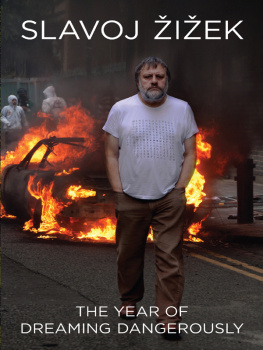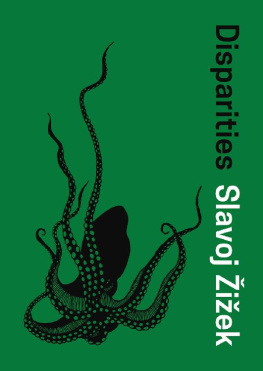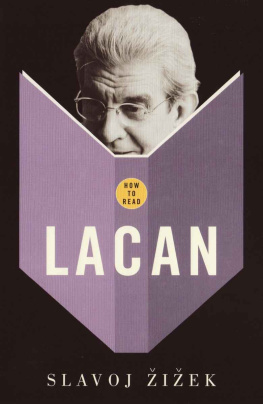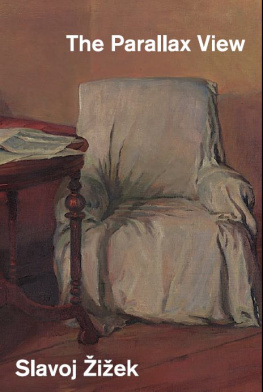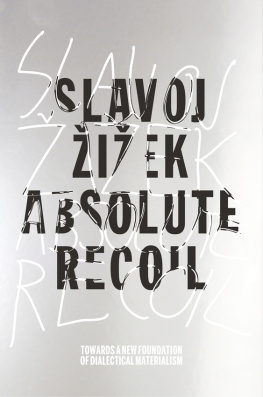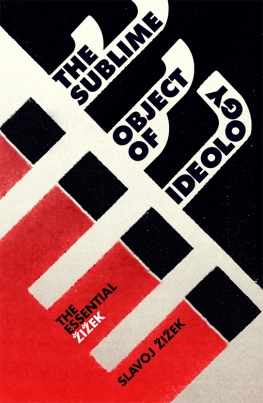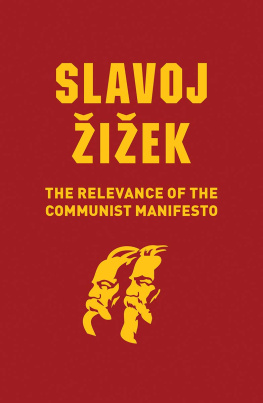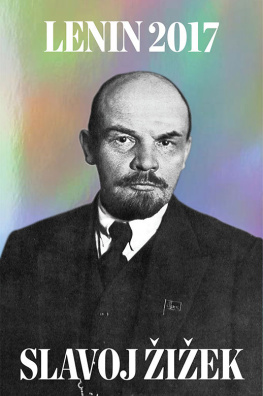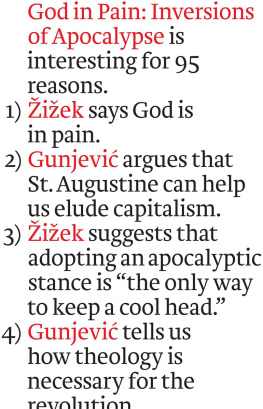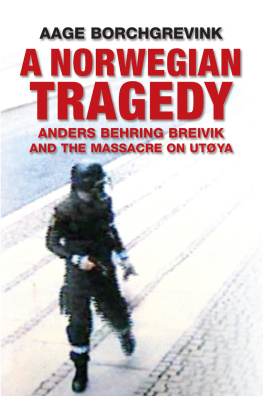
THE YEAR OF
DREAMING
DANGEROUSLY
Slavoj iek

Contents
Chapter 7 Occupy Wall Street, Or, The Violent Silence of a
New Beginning
Introduction:
War Nam Nihadan
T here is a wonderful expression in Persian, war nam nihadan , which means to murder somebody, bury his body, then grow flowers over the body to conceal it. In 2011, we witnessed (and participated in) a series of shattering events, from the Arab Spring to the Occupy Wall Street movement, from the UK riots to Breiviks ideological madness. It was the year of dreaming dangerously, in both directions: emancipatory dreams mobilizing protesters in New York, on Tahrir Square, in London and Athens; and obscure destructive dreams propelling Breivik and racist populists across Europe, from the Netherlands to Hungary. The primary task of the hegemonic ideology was to neutralize the true dimension of these events: was not the predominant reaction of the media precisely a war nam nihadan ? The media killed the radical emancipatory potential of the events or obfuscated their threat to democracy, and then grew flowers over the buried corpse. This is why it is so important to set the record straight, to locate the events of 2011 in the totality of the global situation, to show how they relate to the central antagonism of contemporary capitalism.
Fredric Jameson argues that, in a determinate historical moment, the plurality of artistic styles or theoretical arguments can be sorted into tendencies that together form a system. To articulate such a system, Jameson as a rule relies on a Greimasian semiotic square, and for good reason: this square is not a purely formal structural matrix, since it always starts with some basic opposition (antagonism or contradiction), and then looks for ways to displace and/or mediate the two opposed poles. The system of possible positions is thus a dynamic scheme of all possible answers or reactions to some basic structural deadlock or antagonism. This system does not simply limit the scope of the subjects freedom: it simultaneously opens up a space; in other words, it is at one and the same time freedom and determination: it opens a set of creative possibilities (which are alone possible as responses to the situation it articulates) as well as tracing ultimate limits of praxis that are also the limits of thought and imaginative projection. Jameson also raises the key epistemological question: such a system of all possible positions
wants to be objective but can never be anything more than ideological: for [example in architecture] it becomes very difficult indeed to think how we might distinguish the real existence of the various kinds into which modern building falls from the patent invention of various systems of those kinds in our own heads. There is, in fact, something of a false problem here: the nagging worry, about whether we are in fact drawing our own eye, can be assuaged to a certain degree by the reminder that our eye is itself part of the very system of Being that is our object of speculation.
Here, we are fully justified in following Hegel: if reality does not fit our concept, so much the worse for reality. Our scheme, if adequate, locates the formal matrix which is (imperfectly) followed by reality. As Marx already recognized, the objective determinations of social reality are at the same time subjective thought-determinations (of the subjects caught up in this reality), and, at this point of indistinction (at which the limits of our thought, its deadlocks and contradictions, are at the same time the antagonisms of objective social reality itself), the diagnosis is also its own symptom. Our diagnosis (our objective rendering of the system of all possible positions which determines the scope of our activity) is itself subjective, it is a scheme of subjective reactions to a deadlock we confront in our practice and, in that sense, is symptomatic of this unresolved deadlock itself. Where we should nonetheless disagree with Jameson is in his designation of this indistinction of subjective and objective as ideological: it is ideological only if we naively define non-ideological in terms of a purely objective description, a description free of all subjective involvement. But would it not be more appropriate to characterize as ideological any view that ignores not some objective reality undistorted by our subjective investment but the very cause of this unavoidable distortion , the real of that deadlock to which we react in our projects and engagements?
The present book endeavors to contribute to such a cognitive mapping (Jameson) of our constellation. After offering a brief description of the main features of todays capitalism, it goes on to outline the contours of its hegemonic ideology, focusing on the reactionary phenomena (populist revolts in particular) that arise in reaction to social antagonisms. The second half of the book deals with the two great emancipatory movements of 2011the Arab Spring and Occupy Wall Streetbefore confronting, via a discussion of The Wire , the difficult question of how to fight the system without contributing to its enhanced functioning.
The instrument of such an account is what Immanuel Kant called the public use of reason. Today, more than ever, one should bear in mind that Communism begins with the public use of reason, with thinking, with the egalitarian universality of thought. For Kant, the public space of the world-civil-society designates the paradox of the universal singularity, of a singular subject who, in a kind of shortcircuit, bypassing the mediation of the particular, directly participates in the Universal. This is what Kant, in the famous passage from his essay What Is Enlightenment?, means by public as opposed to private: the latter refers not to ones individual, as opposed to communal, ties, but to the very communal-institutional order of ones particular identification; while public designates the trans-national universality of the exercise of ones Reason.
However, does not this dualism of the public and private use of reason rely on what, in more contemporary terms, we could call the suspension of the symbolic efficacy (or performative power) of the public use of reason? Kant does not reject the standard formula of obedienceDont think, obey!in favor of its direct revolutionary oppositeDont obey [do what others tell you to do], think [with your own head]!. His formula is rather Think and obey!; that is, think publicly (with the free use of Reason) and obey privately (as part of the hierarchical machinery of power). In short, thinking freely does not authorize me to do just anything. The most I can do when my public use of reason leads me to see the weaknesses and injustices of the existing order is to make an appeal to the ruler for reforms. One can even go a step further here and claim, like Chesterton, that the abstract freedom to think (and doubt) actively prevents actual freedom:
We may say broadly that free thought is the best of all the safeguards against freedom. Managed in a modern style the emancipation of the slaves mind is the best way of preventing the emancipation of the slave. Teach him to worry about whether he wants to be free, and he will not free himself.
But is the subtraction of thinking from acting, the suspension of its efficiency, really as clear and unequivocal as that? Kants secret strategy here (intentional or not) is like the well-known trick of the lawyer who makes a statement to the jury that he knows the judge will find inadmissible and order the jury to ignorewhich is, of course, impossible, since the damage has already been done. Is not the withdrawal from efficacy in the public use of reason also a subtraction which opens up a space for some new social practice? It is all too easy to point out the obvious difference between the Kantian public use of reason and the Marxist notion of revolutionary class consciousness: the former is neutral and disengaged; the latter is partial and fully engaged. But the proletarian position can be defined precisely as that point at which the public use of reason becomes in itself practical and efficacious without regressing into the privacy of the private use of reason, since the position from which it is exercised is that of the part of no-part of the social body, its excess which stands directly for universality. By contrast, the Stalinist reduction of Marxist theory to the servant of the party-state is precisely a reduction of the public to the private use of reason.
Next page
